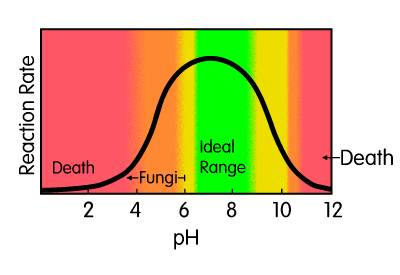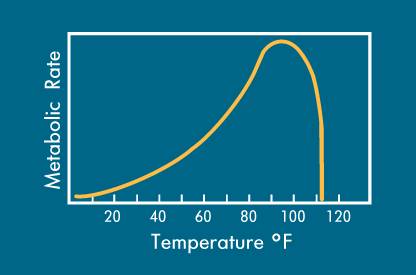

| Page 1 | Page 2 | Page 3 | Page 4 | Page 5 | Page 6 | HOME |
The biochemical reactions in living cells which allow them to assimilate food to provide energy for their growth and reproduction, are termed metabolism.
During aerobic reaction, bacteria oxidize one-third of the organic matter present, yielding enough energy to synthesize the remaining organics into additional living cells, carbon dioxide and water.
When obtaining their nutrients in an anaerobic reaction, the by-products are organic acids, aldehydes, ketones, and alcohols.
The rate at which metabolism occurs is limited by the amount of available nutrients, the specific strains of bacteria present and their efficiency. Temperature and pH levels also limit bacterial growth rates. As metabolism continues, the number of microbes increases and the food supply is consumed at a faster rate. More efficient bacteria degrade organic wastes faster. |


| Page 1 | Page 2 | Page 3 | Page 4 | Page 5 | Page 6 | HOME |